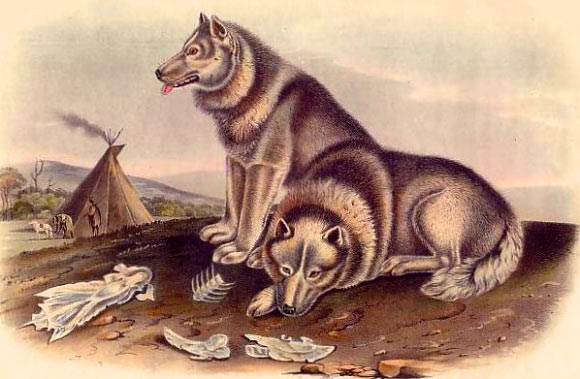Pre-contact Central and South American dogs (Canis familiaris) — all dogs preceding contact with European settlers — descended from a single maternal lineage that diverged after dogs entered North America; specifically, the divergence time between North, Central and South American dog lineages is consistent with the spread of agriculture and the adoption of maize in South America between 7,000 and 5,000 years ago, according to new research led by University of Oxford scientists.

“Dogs accompanied early waves of people who entered North America at least 15,000-16,000 years ago,” said University of Oxford researcher Aurélie Manin and colleagues.
“They were the only domestic animal introduced from Eurasia into the Americas prior to the arrival of European settlers.”
“Archaeological and morphological evidence suggest that Arctic dogs were used for sledding, which would have been instrumental for human groups crossing from the cold tundra of Siberia.”
“Ancient DNA analyses have shown that all dogs preceding contact with European settlers possessed mitochondrial DNA belonging to a lineage that is specific to the Americas.”
“Dogs belonging to this lineage spread throughout the Americas, except in the Amazon basin where linguistic data suggest that they were unknown until the Europeans arrived, during the 16th century.”
In the new study, the authors sequenced 70 complete mitochondrial genomes from archaeological and modern dogs, collected from Central Mexico to Central Chile and Argentina.
Their results reveal that all pre-contact dogs in Central and South America descended from a single maternal lineage that diverged from North American dogs after humans first arrived on the continent.
Rather than dispersing rapidly, dogs followed a slower path — what scientists call ‘isolation by distance’ — gradually adapting to new environments as they moved with people through the Americas between 7,000 and 5,000 years ago, in step with the…
Read the full article here
